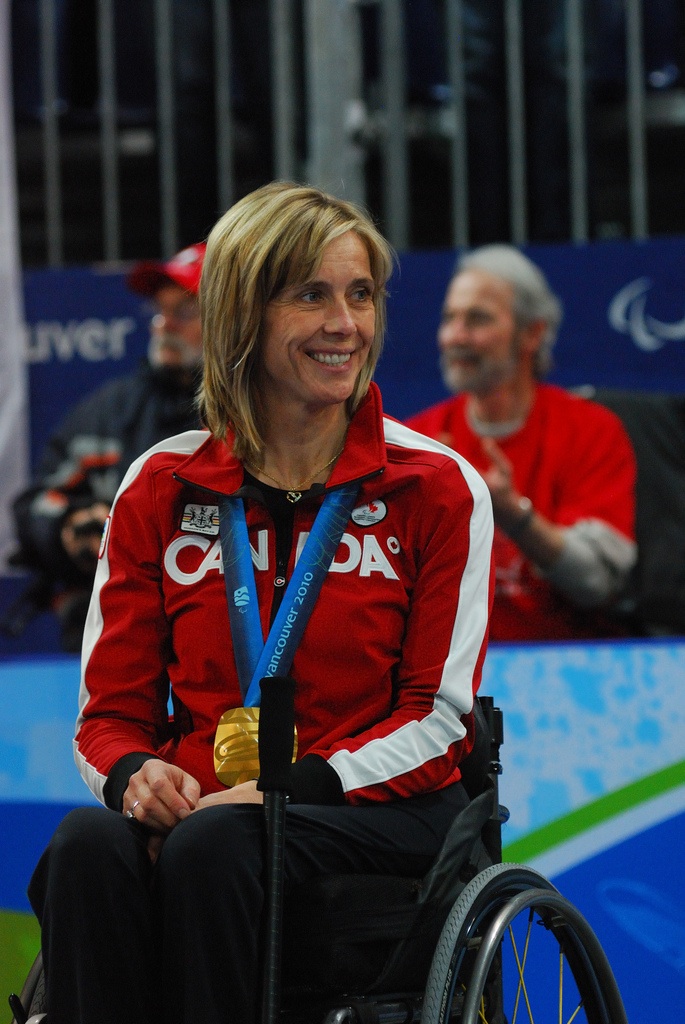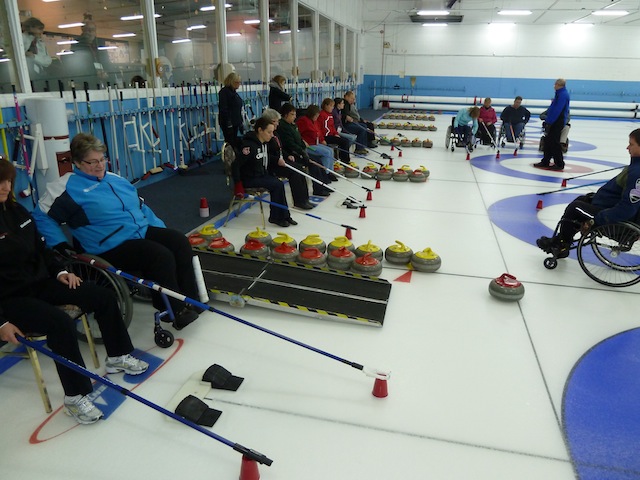Wheelchair Curling LTAD Summit: “No cookie-cutter approach”
Athletes, coaches, representatives from the Canadian Curling Association, member associations, and provincial and national sport organizations gathered recently in Ottawa for the first-ever Wheelchair Curling Long-term Athlete Development (LTAD) Summit to share best practices for developing the sport both recreationally and competitively in Canada.
In her inspirational opening night presentation, Canadian Paralympic Wheelchair Curling gold medalist Sonja Gaudet shared her experiences as an athlete at the Paralympic Games. She showcased the different winter Paralympic sports and athletes, focusing on the theme of ability, not disability, and highlighting the overall goal of paralympism: “achieving one’s full potential through sport, whatever form life’s challenges might take.”
Gaudet also captured the challenges facing both participants and organizers at all levels: there is no “cookie cutter” approach. Clubs, sports organizations and curlers themselves are finding a variety of ways to attract new wheelchair curlers and provide opportunities for them to participate in curling leagues, provincial and national championships, or even at the international level.
Summit participants explored ways to increase their understanding of the sport, including an on-ice session organized by Gaudet and Summit organizer and coach, Karen Watson. Delivering a rock from chairs placed against the boards and navigating around the ice in wheelchairs brought home some of the adaptations required in the sport, but also emphasized that curling – whether sitting in a wheelchair, using a delivery device, or throwing from the hack – is still curling: accessible, inclusive, and fun.
Athletes and coaches from other parasports shared their experiences as well. Paralympic swimmers Marie Dannhaeuser and Elisabeth Walker-Young, both of whom continue their contribution on the national stage since retiring from competition, stressed the importance of raising the profile of wheelchair curling so that athletes see it as a sport to pursue – rather than finding out about its possibilities by accident.
Delegates spent much of the weekend addressing the issue of moving athletes through the LTAD “curling for life” pathways. How can the sport identify, recruit, retain and train athletes for recreational and competitive play when there are so few experienced wheelchair curling coaches? Making sure wheelchair curlers have access to instruction and coaching from “Active Start” to “Active for Life” is essential in the LTAD structure.
Curling facility managers talked about the leagues that currently operate in their clubs. RA Centre CEO Rick Baker shared his experiences with RA’s wheelchair curling league made up of 38 curlers, and the excitement surrounding the upcoming Canadian Wheelchair Curling Championship to be hosted in his facility. Jasper Place’s Cathy Craig explained the process she followed to transition athletes from a “Have A Go” day into a weekly wheelchair curling league. Other athletes and curling administrators talked about the benefits and challenges of integrating wheelchair curlers into other club leagues alongside standing curlers and stick curlers.
“There is no ‘cookie cutter’ approach,” is the message that participants took away from this first-ever Wheelchair Curling LTAD Summit, which was funded in part by a grant from the Canadian Paralympic Committee. But by creating a master plan, addressing the needs of athletes and coaches, developing partnerships and focusing on communication, supporters of wheelchair curling in Canada are working hard to ensure that the sport continues to grow.






